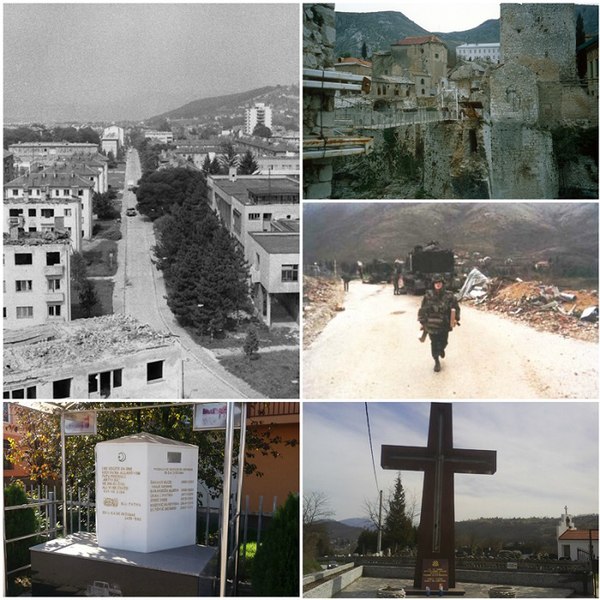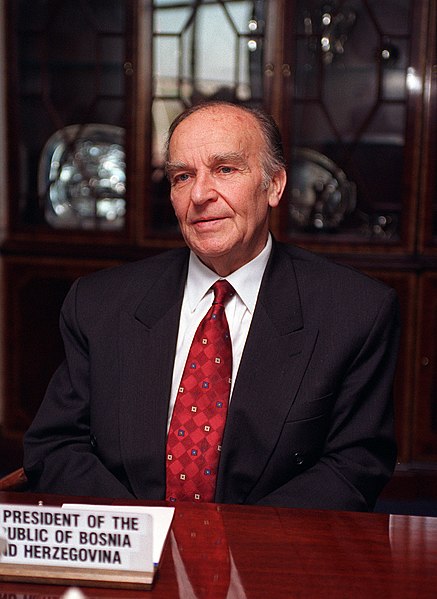The Croat–Bosniak War was a conflict between the Republic of Bosnia and Herzegovina and the Croatian Republic of Herzeg-Bosnia, supported by Croatia, that lasted from 18 October 1992 to 23 February 1994.
It is often referred to as a "war within a war" because it was part of the larger Bosnian War. In the beginning, the Army of the Republic of Bosnia and Herzegovina and the Croatian Defence Council (HVO) fought together in an alliance against the Yugoslav People's Army (JNA) and the Army of Republika Srpska (VRS). By the end of 1992, however, tensions between Bosniaks and Bosnian Croats increased. The first armed incidents between them occurred in October 1992 in central Bosnia. The military alliance continued until early 1993, when it mostly fell apart and the two former allies engaged in open conflict.

Clockwise from top right: remains of Stari Most in Mostar, replaced with a cable bridge; French IFOR Artillery Detachment, on patrol near Mostar; a Croat war memorial in Vitez; a Bosniak war memorial in Stari Vitez; view of Novi Travnik during the war
HVO, ARBiH, and HOS soldiers in Mostar, June 1992
Territorial changes from January 1993 to May 1995, also showing areas of joint HVO-ARBiH control before the start of the war
UN peacekeepers collecting corpses after the massacre in Ahmići
Republic of Bosnia and Herzegovina
The Republic of Bosnia and Herzegovina was a state in Southeastern Europe, existing from 1992 to 1995. It is the direct legal predecessor to the modern-day state of Bosnia and Herzegovina.
Alija Izetbegović during a visit to the United States in 1997.
Primary school wartime student report card.
Image: Republic of Bosnia and Herzegovina passport (cover)
Image: Republic of Bosnia and Herzegovina passport (front cover)








